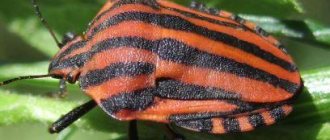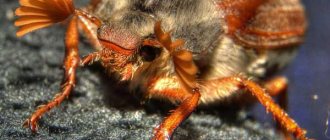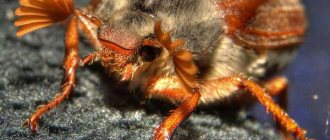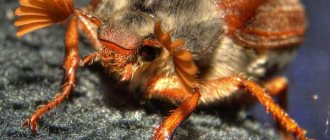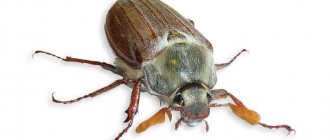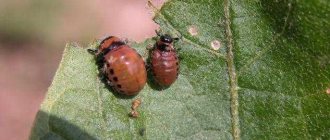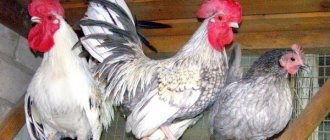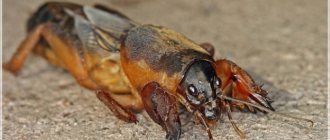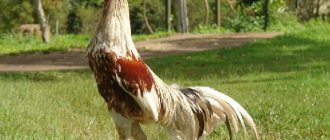Soft-bodied beetles, which include today's hero fireman beetle, are given this name because their elytra do not have a hard chitinous cover, but are soft and flexible. Despite the fact that because of such wings, soft-bodied animals seem to be vulnerable to birds, frogs and other animals that want to feast on them, this is far from the case.
The fact is that the tissues of red firefighter beetles contain a toxic substance called cataridin, which protects the insect.
Below is a typical photo of a fireman's beetle.
Description and features
The fireman beetle insect belongs to the family of soft beetles, the name of which reflects their main feature - soft bodily integument that does not have a hard chitinous cover.
In scientific sources, the full name of the beetle is found - the red-legged soft beetle. Lives in temperate and cold zones, the fireman is distributed over a vast territory of Eurasia.
The insect is only 1.5-2 cm in length. The body has an elongated and flattened shape. The abdomen is composed of 7 rings of red or orange color. The big head is retracted. There is no upper lip. The filamentous antennae consist of 11 joints.
The elytra are black or dark gray. The upper part of the body has villi. In the front part of the back, near the head, you can see a dark spot in the shape of a heart, but the outline of the pattern changes for each representative of the species.
The fireman beetle in the photo always amazes with its slender shape and long antennae, like antennas, turned in different directions.
Female firefighter beetles are larger than males. They can also be distinguished by their claws. In females they are larger.
Soft-bodied insects and their larvae are useful because they eat many small insects. Active insects can often be found on plant flowers, garden plantings of raspberries, strawberries, currants, etc.
Birds and large insects do not bother firefighters because of their ability to defend themselves. The beetles' tissues contain a substance called cataridin, which is poisonous to enemies. When hunting, a small predator attacks caterpillars, flies, and other small insects, bites them and injects poison, like a snake.
After immobilizing the prey, they release a special liquid that liquefies the tissues of the prey to absorb food.
If you catch a softie and take it in your hand, it will release a blood-colored liquid with an unpleasant odor from its abdomen. There is no point in checking whether fireman beetles bite or not. It is known that it can bite with its dagger-shaped jaws, reminiscent of the teeth of poisonous snakes.
Such a grip often saves the beetle from the invader, who only needs to unclench his palm. The fire beetle usually quickly flies away or pretends to be dead by tucking its limbs. Even in flight, it is not difficult to catch an insect - the beetle’s movement speed is low due to confidence in its own safety.
Softworm larvae look like a bunch of dark-colored, furry beads. The larvae live in fallen leaves, rotten wood, soil, and under the bark of trees. They move quickly. They feed on smaller larvae of their relatives and their eggs.
They have extraintestinal digestion. The larvae release digestive juice into the victim’s body, destroying tissue, and then suck the resulting liquid.
In spring, meltwater forces the larvae to crawl out onto the snow, which is why they are called snowworms. The development of larvae lasts for 2-3 years; they pupate in the soil.
The red fireman's beetle serves as an environmentally friendly defense against garden pests. To attract beneficial insects, it is recommended to keep fallen leaves near the trees, not to use pesticides, and not to dig up the area, especially the tree trunks. Soft beetles are natural agricultural assistants.
The benefits and harms of the fireman's beetle have been well studied. There is a known method of fighting cockroaches in the house using soft beetles. It is enough to bring a couple of insects - there will be no red Prussians. Causing harm is associated with an overpopulation of beetles in one area, when they eat buds and fruits on trees.
To restore natural balance, firefighters can be carefully collected by hand and given to neighbors if they agree. Gloves will not be superfluous in this work, since the beetles bite
Another method is to spray the area with a mixture containing tobacco dust or crushed cigarettes. The pungent odor repels insects. But this method of scaring helps only until the first rain.
Radical methods of application are to use Mashenka chalk, which is crushed and sprinkled on the borders of a certain area.
It is better to get rid of insects indoors using natural means. The components of the repellent composition can be Provençal herbs, red pepper, and wood ash. But this method is not always effective.
It is recommended to catch insects by hand, since getting rid of firefighter beetles in the house using chemicals will not be environmentally friendly.
Destruction
To those who were not convinced by the previous lines of the author, this last part of our story is dedicated. It will talk about how to deal with the fireman beetle.
The easiest thing is to collect red-legged softies by hand and give them to a neighbor who has been tormented by aphids. Be careful, though, firefighter beetles are dangerous because the bites of their strong jaws are quite painful.
The second method of control, which can still be tolerated on your site, is spraying with natural ingredients. Pollination with a tobacco-based mixture is best. The composition of the folk remedy is as follows:
- tobacco dust, or crumbled cheap cigarettes - 1 part;
- wood ash – 3 parts;
- red hot pepper;
- fragrant seasonings like Provençal herbs or suneli hops.
Add the last two components “to taste”, a small pinch at a time. Sprinkle the resulting powder thickly onto the damaged plantings. The unfamiliar pungent smell is designed to scare off insects and keep them out of the area.
Those who do not like the gentle natural method of fighting can use more radical methods. “Experienced” fire fighters against beetles recommend using “Mashenka” chalk, which is popular among cockroaches and their owners. You should crush it into fine dust and dust the boundaries of the quarantine area.
At the end of our story, we invite you to watch a video that will refresh your understanding of the fireman beetle.
Description and characteristics of carrot fly
To successfully protect beds from this pest, you need to study its description and features of its life cycle. An adult insect does not harm the plantings, but is the cause of the appearance of larvae.
Did you know? At the ends of the flies' legs there are organs of touch and taste, with the help of which insects taste food.
The characteristics of the carrot fly are presented below:
- This dipterous insect belongs to the Psilidae family, its body length is about 4.5 mm.
- The pest's chest and abdomen are painted black and covered with light down. The head is reddish-brown, and the paws are yellow.
- On the back of the insect there are two transparent, elongated wings with dark thread-like veins.
- Small oval eggs of the pest have a size of no more than 0.6 mm and are painted white. They hatch into light yellow larvae, 5 mm long and with a shiny, glossy body.
- During the pupation stage, the larvae form a light brown cocoon around themselves, which is located in the upper layers of the soil at a depth of 15–25 cm.
- The peak activity of the pest occurs in the morning and evening, when there is no intense heat and bright sun.
Pest development cycle
To prevent the appearance and spread of the pest in the garden, you need to know the timing of preventive and protective measures, and also carefully examine the plants during the appearance of insects and their larvae.
Important! Insect productivity increases in the presence of nectar-bearing plants nearby, which serve as a food source for the adult carrot fly. The life cycle of the carrot fly is described below:. The life cycle of the carrot fly is described below:
The life cycle of the carrot fly is described below:
- Adult insects hatch from pupae in May, after the soil has warmed to a temperature of +15°C. From this moment the spring flight of the pest begins.
- The egg laying period lasts 20–25 days from the moment the insects emerge from the pupae. Females lay eggs at the base of carrot stems, making them difficult to spot.
- After 1–1.5 weeks, caterpillars emerge from the eggs, penetrate into the upper layers of the soil and feed on juicy root crops. They bite inside the carrot and live in it until they pupate.
- The process of pupal formation occurs in the first half of July, and the cocoons remain in the upper layers of the soil for 2–4 weeks.
- The second generation of adults is born in the time interval from the second half of July to the beginning of August. At this time, the summer flight of insects begins - they again lay eggs on plant stems, and the process repeats.
- When the time comes for pupation, larvae from the second generation of carrot flies move to the upper layers of the soil and form a cocoon, which can safely overwinter in the soil until spring.
Reproduction methods
Among adult insects there are male and female individuals, so reproduction is bisexual. Mass mating of insects occurs during the chokeberry flowering period in May, after which the females begin to lay eggs. One female can lay more than 100 eggs. If the soil humidity drops below 60% and the temperature on the soil surface exceeds +20°C, then some of the eggs and caterpillars die.
Did you know? The average lifespan of a fly is about 30 days.
Lacewings
The lacewing is also probably familiar to everyone: it is a cute, ballet-like graceful green or beige insect that often lands on the windows of houses in the summer. They have a characteristic smell of mice, which scares away enemies from them.
Despite its innocent, angelic appearance, the lacewing is one of the most bloodthirsty predators. This is a nocturnal hunter; during the day it rests, and at nightfall it goes to deal with aphids. It is the lacewing that is artificially grown to protect plants in greenhouses, including rare plants in greenhouses.
Look at her face.
It is an incredible aggressor: one larva devours more than 500 adult aphids during its larval life; and one female lacewing lays more than 400 eggs!
Nadanna
Brown larvae can be seen in aphid plantings. This is a lacewing. She doesn't look very pretty and, of course, falls under attack.
Soldier beetle
The soldier beetle (lat. Cantharis rustica, English Soldier Beetle), also known as the Fireman beetle or the Red-legged soft beetle, the Village soft beetle is a small-sized beetle of the Cantharididae family (1.5 cm long) with black elytra and a black spot on the upper side of the back , in outline exactly the same as the suit of spades on cards. In Russia it is more often called the firefighter beetle. It has nothing to do with fires, but is named so because of its red and black uniform. In other countries, it is called the soldier beetle, again because of its similarity with the old uniform of British soldiers - the English Royal Guards and Beefeaters. Please do not confuse the soldier beetle with the soldier bug (lat. Pyrrhocoris apterus).
Often, “soldiers” can be found sitting on dream flowers and eating its delicate petals. But as soon as a person comes closer, the frightened beetle opens its soft wing covers and quickly takes off. In terms of ease of flight, it could perhaps compete even with bronzes. If you try to pick up a beetle, it will immediately release odorous blood through the joints of its legs and abdomen and bite you. And the soldier’s grip is like a bulldog’s! But as soon as you open your fingers, the battered beetle loosens its grip and quickly takes off. If danger overtakes and it was not possible to fly away, then the soldier beetle falls on its back, pretending to be dead.
The powerful jaws of the soldier beetle were not given by nature for eating flowers; the soldier beetle is a bloodthirsty predator. Having tracked prey from the air, the soldier beetle lands next to it, and often directly on it, and kills it with several bites. But it does not have the precise bite of ground beetles, which quickly infect the insect's ganglia. The soldier acts at random, inflicting numerous bites and literally chewing up the unfortunate insect. Large and strong game is too much for the soldier beetle: his soft cuticle is not enough to be brave, so he hunts mainly for sleepy flies and other small things.
Due to the specific segmentation of the body, the larvae of soldier beetles look like a bunch of beads. In nature, they can be found in the spring under the bark of rotten trees at a time when they are ready to pupate. Soldier larvae are also predators. They nimbly scurry through wood dust in search of worms and small centipedes.
A special channel runs inside their sharp sickle- or dagger-shaped jaws. These jaws are not adapted for chewing food and serve mainly to hold prey. In this respect, they resemble the teeth of poisonous snakes. The similarity becomes even more complete because, like snakes, when the soldier larvae bite through the channels in the jaws, they introduce poison into the victim’s body - saliva and digestive juices of the intestines, which immediately kill the caught animal. Then additional digestive fluid is poured onto its body through the mouth, the tissues soften and dissolve, and the semi-liquid pulp is sucked in by the larva. Larvae of this genus are popularly called Snowworms.
After a couple of weeks of incubation, adult beetles emerge from the pupae by mid-June. They actively feed and disperse, and within a month you can watch them mate. And having laid eggs, the females die by the end of July - these beetles are not long-lived at all.
An additional source of food for them is the fleshy parts of flowers, which they often gnaw out. Soldier beetles are not afraid of birds of prey and insects, from whose attacks they are reliably protected by a poison produced in their body (cantharidin).
Body color can be bright or dark, usually a combination of yellow and red or “pure” black. The upper part of the body is covered with hairs similar to villi. The upper lip is missing. Simple vertices of mandibles. The claws are common, but differ depending on the sexes.
The benefits of these beetles are much greater than the harm they cause. If cockroaches have settled in the house, then it is enough to let a few soldier beetles into it to get rid of the annoying insects.
Photo of soldier beetle Video of soldier beetle
/wp-content/uploads/2017/06/soldatik.mp4
+1
What benefits do softies bring?
The total benefit of soft beetles outweighs the possible harm from it. Evgenia would like to find out from us what benefits soft beetles bring.
The delicate body and flexible elytra of the beetles gave entomologists a reason to classify them as soft beetles. The most prominent representative of the family is considered to be the country soft-bodied, red-legged one.
Soldier or firefighter?
Popular rumor has given the bug two names at once: soldier beetle and firefighter beetle.
It resembles a fire engine with the coloring of its abdomen and the upper part of its legs, but the elongated proportions of the body - a strict rectangle of folded dark gray elytra - make you see the beetle as a career military man.
Due to the lack of chitin, these bugs could well become prey for birds or larger insects, but the soft beetle scares them away with its bright red color and toxicity.
The most prominent representative of the family is considered to be the rustic soft calf, the red-legged
The beetle needs venom in order to kill smaller victims, and sharp jaws to hold them. By the way, the soft-bodied hunter deals only with those who are deprived of chitinous cover (aphids, flies, insect eggs, scale insects, beetle larvae). You can also learn about the benefits of ladybugs in the garden.
The male, as often happens, is smaller than the female, but the size of the beetle does not in any way affect its tenacity: having grabbed a person by the finger, it will not open its strong jaws until it is exhausted.
Catching a softie in flight will not be difficult; it has a low speed due to its confidence in its own safety.
Firefighter larvae spend the winter under snowdrifts, hiding in the leaves. With the first rays of spring and the melting of snow, the larvae, running away from the “big” water, appear on the surface: it is impossible not to notice them against a white background. People called them “snow worms.”
The bright color of the soft calf scares away birds
Benefits of soft beans
Since these beetles prey on aphids, caterpillars, larvae and other pests, the benefits of soft beetles for the garden are not in doubt.
But if these insects multiply on your site, they are quite capable of switching from their usual food preferences to additional ones, starting to eat buds and fruits.
In this case, the soldier inhabits the plants that are most edible for her - raspberries, currants, cherries, honey and strawberries.
Since these beetles prey on aphids, caterpillars, larvae and other pests, the benefits of soft beetles for the garden are not in doubt
Note that soft belly is an excellent remedy against cockroaches. A few soldier beetles are said to completely drive away these nasty insects.
As a result, the total benefit from the soft bean still outweighs the possible harm from it. And if you want to lure bugs into your property, do not dig up the soil under the trees, leaving room for the soldier larvae.
Fire bug and fire bug. How to distinguish them?
As soon as the spring sun warms up, small, rather pleasant-looking insects wake up - soldier bugs. People often call them firefighter beetles, but toy soldiers have nothing in common with beetles; they belong to different orders.
First, let's take a closer look at the soldiers. The soldier bug, or wingless red bug, or cossack bug, is a terrestrial insect of the Red bug family of the order Hemiptera. They live in temperate climates throughout Eurasia, northern Africa, and North America.
These bugs measure 9-11 mm and cannot fly. The body is painted black, the elytra and pronotum are painted red, which makes their appearance bright and attractive. Like all bedbugs, the mouthparts are piercing-sucking. Unlike house bugs, soldier bugs do not bite and are not dangerous to people.
Red bugs in early spring and late summer like to gather in dense clusters on stumps, tree trunks, woodpiles and fences, always on the sunny side. They can remain in this state for hours, basking in the sun. At this time they most often catch our eye.
They have no natural enemies - the red color, warning of danger, scares away birds and other insects. Redbug Pyrrhocoris apterusPhoto: Depositphotos
The red bug feeds on fallen seeds, plant juices, and dead invertebrates. Cannibalism is also observed in the colonies of these cute insects - they eat dead relatives.
In the spring, the female lays two to three dozen pearly white eggs, from which larvae appear within 7-10 days. Usually the body of the larvae is colored red, with dark spots scattered throughout it, this makes them look like adult insects.
Soldiers overwinter under fallen leaves or tree bark.
Red bugs are not considered pests of agricultural crops, but recently there has been evidence that they damage seedlings of green crops, cabbage, beets and other cultivated plants.
You don’t have to use insecticides - they don’t cause that much harm compared to officially recognized pests. It is enough to use folk remedies: sprinkle the plants with an infusion of onion peels, wormwood, and wood ash. You can also treat cultivated plantings with a solution of mustard powder (100 g per bucket of water).
You can also plant a black cohosh plant on your plot, which will not only repel soldier bugs from the beds, but will also decorate your garden with original bushes, and during the flowering period, with exquisite silver-white inflorescences. Fireman BeetlePhoto: Depositphotos
The fireman beetle, or soft beetle, the rustic soft beetle, is twice as long as the soldier bug, its size ranges from one and a half to two centimeters, it belongs to the Soft Beetle family from the order Coleoptera.
The fireman's abdomen is colored red or orange, the elytra are black or dark gray, the paws are black, and the filamentous antennae are dark. Because of its bright abdomen, associated with the uniform of the Royal Guards, the British call the soft-bodied beetle the soldier beetle.
You can see soft beetles in the grass or on the leaves of plants. They feed on small insects and plant leaves. If the bug is disturbed, it will fly away or, with its paws tucked in, pretend to be dead.
The larvae of fire beetles live in leaf litter, under the bark of trees, in rotten wood, and feed on eggs and insect larvae, which makes them useful to humans.
How to get rid of it: effective methods of control
Firstly, it should be remembered that these insects can harm the future harvest and very seriously. First, you need to accurately determine that the pest is the wingless red bug, since garden crops are damaged by other, more dangerous insects.
Plant infection is determined by a number of signs. For example:
- Beet shoots die quickly.
- First, the leaves begin to curl inward.
- Umbrella crops such as dill and carrots also disappear quickly.
- The buds of garden flowers begin to fall.
- Cabbage heads are starting to suffer from yellow spot.
It is important to know! It is preferable to start exterminating the pest in the spring, before they begin to multiply and destroy young shoots of plants. In this case, you must not forget about the larvae and eggs.
Mechanical removal method
If there are not so many wingless red bugs in the area, then you can catch them by hand, although this will have to be done for several days in a row. Despite the fact that this method of fighting takes a lot of time, it is considered quite effective.
Hunting belts
Catching belts are used to protect garden trees. They can be purchased at a retail outlet or made yourself. To make such a simple device, you will need a piece of corrugated cardboard, up to 25 cm wide. The cardboard is cut across the grooves, after which office glue is applied. On the reverse side, glass wool, up to 1.5 cm thick, is attached to the cardboard, after which the belt must be secured to the tree using wire.
Control with insecticides
If there are too many soldier beetles, you will have to use toxic substances such as insecticides. The Japanese remedy “Bankol” is considered a fairly effective drug against soldier beetles. The basis of this insecticide is the substance bensultap. The product is sold in sachets of 10, 25 and 100 g and is a white or cream-colored powder. The drug paralyzes insects and after a couple of days they die.
The advantages of the product include:
- This toxic substance does not pose a danger to humans or to many beneficial insects, such as bees.
- The product does not have an unpleasant odor.
- Its components do not accumulate in the ground. It can be used in hot weather.
For 10 liters of water you need to take 5-7 g of the substance, but before that it should be mixed in a small amount of liquid. The product is sprayed onto the plants. Consumption of the substance is 5-10 liters of solution per 1 sq.m of garden.
In addition to Bankol, other drugs are also suitable, such as:
- Actellik.
- Karbofos.
- Aktara.
These insect control agents are harmful to humans, so you can work with them using personal protective equipment. The working composition must be prepared strictly according to the instructions.
Folk remedies
Folk remedies prepared according to folk recipes are not toxic compared to chemicals.
Effective recipes:
- Take 10 liters of water and 200 g of onion peels. After this, the product is infused for about 5 days. The infusion is filtered and the plants are sprayed with it every 5 days.
- For 1 bucket of water, take 100 g of mustard powder or wood ash. Plantings are treated with this solution.
- Take 300 g of soap per 10 liters of water and dissolve it, after which the plants are treated with this solution. There is another option: the trimmed area is sprinkled with crushed pieces of soap, after which this area is watered. After this, you need to throw a piece of fabric over this place, the bugs will start running out and get on the piece of fabric. All that remains is to quickly collect the fabric along with the bedbugs and throw it away.
When it’s hot outside, the intensity of treatment can be increased by waiting until the soil dries well.
Nutrition
The predatory nature of firefighter beetles manifests itself in the hunt for a variety of insects: aphids, caterpillars, small leaf beetles, and the larvae of other soft beetles. Organisms protected by a chitinous covering are too tough for the firefighter beetle.
Red-legged softies approach their prey closely or sit on it. They press with their jaws from all sides until the resistance stops. Sharp and strong sickle-shaped jaws, which are designed specifically for holding, not chewing, help preserve prey.
Injecting poison and digestive juice into the victim’s body helps convert what they catch into food. The diet includes insects whose size is smaller than the predator itself.
Many gardeners do not know about the benefits of firefighter and try to get rid of it, classifying it as a plant pest. It has been proven that the presence of red-legged softies on the site contributes to a good harvest.
Firefighter beetle larvae also follow the diet of predators. It is interesting that the number of garden pests destroyed by softfly larvae exceeds the imago, i.e. developed beetles. The larvae eat various centipedes, worms, and small insects.
What do firefighter beetles eat, besides small animals? If an excessive number of red-legged soft-bodied animals have gathered in one area, then the lack of animal food is compensated for by plant food.
Beetles bite off flowering buds and greenery of fruit crops, causing harm to gardeners and gardeners. This does not happen so often, so experts unanimously believe that the benefits of firefighter beetles are disproportionately greater than the harm.
The silent employee's original menu
If you take a closer look at this cute creature, you will notice that it has strong jaws, which are given to it for special nutrition. And, of course, these are not flower petals. Biologists classify the insect as a predator due to its formidable disposition. What does the fireman beetle eat as it travels through the garden? The predator's menu includes:
- small caterpillars;
- insect larvae;
- aphids;
- small chafers that feed on leaves;
- sleepy flies.
The fireman tracks his prey from the height of his flight, after which he lands directly on it or very close to the victim. He then bites her, releasing a burst of venom. As a result, the insect dies.
Digestion of food occurs due to the injection of a special substance into the victim’s body. It softens hard tissues, and the beetle simply sucks up the prepared food.
It is worth noting that the beetle’s menu includes insects that are much smaller than this garden predator. They also often have a soft body surface.
He cannot bite through the hard cover of glossy wings, so he “takes off his hat” in front of them and moves away.
Fireman's beetle larvae feed on small worms and centipedes that live in rotten wood. Therefore, there is no need to rush to remove old trees and stumps from the garden.
https://youtube.com/watch?v=OFCE64B2Yao
Why is the soldier bug harmful?
Soldier bugs are far from harmless animals, as is commonly believed. They feed not only on seeds and remains of dead insects. Pests suck the juice from young shoots, leaves, and fruits, causing great damage to garden crops.
Damage caused by firebugs:
- they like to suck the juice from grape fruits, as a result, the yield of the bushes is significantly reduced. Damaged berries become unsuitable for food;
- The insect's proboscis is quite powerful, so it can pierce hard seeds and thick shoots. The plant from which bugs suck out beneficial juices gradually stops blooming, bearing fruit and dies;
- affects tree trunks and branches;
- damages cabbage and beet leaves, leaving small punctures on them;
- destroy seeds sown in the soil;
- are dangerous pests for emerging seedlings. The bugs suck out the nutritious juice, causing the sprouts to dry out. Fire bugs cause harm when there are a lot of them
Amazing birth
Like any insect, the firefighter beetle is born from eggs that the female hides inside rotten stumps or loose soil. Although it dies after a while, cute larvae emerge from the clutch. From the outside, the “babies” look like miniature black beads strung on a thin thread.
While in such a shelter, the larvae are constantly moving, which has a beneficial effect on their development. Here they feed and live until they transform into a pupa. After 14 days, a magnificent creation emerges from it - the fireman beetle.
Harm of the cockchafer
The question of the dangers and benefits of the cockchafer is in the first place for people whose activities are related to agriculture. May beetle is another name for a beetle that belongs to the Coleoptera insects. They are excellent fliers and can fly 20 km or more. This mobility provides the beetle with a wide choice of food. The favorite delicacy of an adult insect is the young leaves of trees and shrubs, their inflorescences and even needles.
Those who do not know whether the cockchafer is dangerous for humans may find its large size and roar during flight terrifying. The insects themselves are not predators; they are attracted to plant foods. The life cycle of an adult lasts only 1.5 - 2 months. The main damage is caused by its larva.
Chafer
Adult nutrition
The mass appearance of the May beetle in the form of an adult individual - imago, is timed to coincide with the beginning of flowering and the appearance of young foliage on the trees. In May, the beetle crawls out of the soil after pupation and immediately begins to eat. In the eastern and northern regions of our country, the main delicacies for Khrushchev are:
- young foliage of aspen, poplar, linden, maple;
- birch and alder catkins;
- needles of larch, spruce, pine;
- inflorescences of apple, cherry, plum trees.
Western beetleworm is characterized by attacks on plants growing in the southern regions of Europe: grapes, walnuts, hazelnuts, oak, chestnut, beech, acacia and others. For summer residents, it is well known why the cockchafer is harmful to the garden. Gooseberry and blackcurrant bushes can attract insects as another source of food. After a thorough meal and mating, female beetles lay eggs in the soil, from which a new stage of the insect, the larva, emerges after a few days.
Harm to the larvae
The inconspicuous light yellow worm is harmless in the first months of its existence. It still has underdeveloped jaws, and it can eat humus, humus, and small grass roots. The real harm to the cockchafer larva becomes noticeable in the second year of its life. After a successful winter in the deeper layers of the soil, the caterpillar moults and becomes larger. Its jaws can handle the roots of garden crops, such as:
- potato;
- beet;
- carrot;
- corn;
- strawberry;
- onion.
Being in the larval stage, the beetle is especially dangerous in the garden. Considering the large number of caterpillars, you can imagine the damage they can cause. In the third year of their life, they molt again and become even more voracious. Now they are tough on the roots of young trees.
Chafer
Having successfully overwintered the next winter, in the fourth or fifth year of its life the larva pupates and degenerates into an adult insect by the next spring. Such a long life cycle of the beetle makes it one of the most dangerous pests of nature.
Ground beetle
In many gardens, the ground beetle is found from April to the end of October. They are predators that feed on eggs, caterpillars, pupae and adults of many garden pests. In one day, one ground beetle can destroy three to five gooseberry moth larvae, up to a dozen sawfly caterpillars, and about a hundred gall midge larvae.
The ground beetle hunts at night and is rarely seen during the day. These insects spend the winter in the soil.
Even more voracious than the adults, the “babies” cause significant damage to the populations of many harmful insects. They feed on fly eggs, moth worms, and slugs. Many other parasite larvae also come to them as a snack.
Ground beetles and their growing offspring will happily settle in sawdust, shavings, and fallen leaves. Arrange a couple of shelters for them on the site, and soon you will have faithful garden assistants in them.
What harm do insects and their larvae cause?
With it, the insect deftly and quickly pierces the plant (usually the leaves, which are softer) and begins to actively feed on the cell sap. This is where everything becomes clear - our little soldier, whom we since childhood considered almost the guard of our gardens and vegetable gardens, is a banal pest, he steals food from plants, and one can say that in this regard he is no different from the banal aphid, which “ ants graze.
Although no, the soldier does have a difference from the aphid: its proboscis in the active state is so strong and durable that it can easily pierce the chitinous cover of a dead insect. Just like from a leaf, it will suck out every drop of remaining juice from a dead insect.
In addition to leaves, which, of course, are an ideal food option for soldiers, they do not disdain berries (rotten, softened, overripe), fruits (of the same consistency) and vegetables, which are essentially no longer suitable.
Usually the larvae rush to young plants, the shoots of which have just emerged from the buds, are tender and full of delicious juice. The proboscis pierces the tissue, permanently distorting the growths and sometimes causing them to dry out completely. Why do they feed on the juice of young shoots? Because their proboscis is still very weak and is only suitable for piercing only the most delicate part of the plant.
For a long time, scientists did not classify the soldier bug as a harmful insect. But over time, the behavior of these bugs began to change: they began to actively attack other insects, destroy garden and vegetable vegetation, creating a lot of trouble and trouble for owners of gardens and summer cottages.
Reproducing very intensively, an army of soldier bugs is capable of causing considerable damage not only to summer cottages, but also to farms. Grape plantations especially suffer from the invasion of these harmful bugs, as both stems and fruits are destroyed.
REFERENCE! For humans, soldier bugs do not pose a threat and are unable to cause harm to them. Therefore, if you find an uninvited guest in a living room, you should simply take him outside and let him out, he will not return again.
Fire beetles feed on aphids, small caterpillars, larvae, leaf beetles and other small pests, thereby benefiting humans. But if there are too many soft beetles, they eat the buds on the trees and the fruits of the cherry trees, causing significant damage.
Advice from pest control experts
A few tips for eliminating pests:
- To prevent the penetration of red beetles with black dots into agricultural land, seedlings are planned to be planted at a decent distance from weeds, alfalfa and perennial legumes. This is due to the fact that such vegetation is used by soldier bugs for wintering. Whereas after cold weather they need nutrition, which is what the nearby crops provide.
- In addition, weeds, as well as alfalfa, are mowed as low as possible. The maximum height of the grass is 2 cm. Thanks to this, it will be possible to prevent red beetles with black dots from settling and multiplying in the garden.
- When planning to plant in an area where weeds previously grew (quinoa, wormwood, acorn grass, etc.), you must first remove the tops from the area and then burn them. Only after this can ornamental or agricultural crops be planted.
- If it was not possible to avoid the penetration of these pests into the land, you can resort to the help of insecticides. For example, many gardeners recommend using Bankol. This product has no harsh fragrance and is absolutely safe for humans and pets.
Prepare the solution as follows:
- 1 bucket of water;
- 7 gr. Bankola.
Pour into a spray bottle, after which the infected seedlings are sprayed.
- As a preventive measure, you can plant a plant such as black cohosh along the contour of the site. It can be used to repel unwanted pests.
Black cohosh is a guarantee of the absence of parasites on the site
Knowing how the soldier bug parasitizes and how to get rid of it, you can prevent this pest from entering your land. Good luck!
VIDEO: Bedbugs are soldiers
Meet the fireman beetle (8 photos + 1 video)
A little biology
The fireman beetle or red-legged soft beetle (Cantharis rustica), a small beetle 1.5-2 cm long. The abdomen is red or orange, the elytra are black or dark gray. On the pronotum, the soft calf has a dark symmetrical spot, similar to a heart, but has an individual shape for each representative of the species. On the head there is a pair of thread-like antennae, consisting of 11 joints. Sexual dimorphism is expressed in size: the male is smaller than the female. In addition, females and males have differences in the structure of the claws; in females they are more tenacious and larger. Soft beetles and their larvae are predators, eating as many small insects as they can handle.
The lifespan of the fire beetle is very short. Typically the breeding season occurs in mid-summer, July. Soon after mating, the female lays fertilized eggs in a soft substrate. It can be leaf litter on untouched soil, or decomposing plant debris: rotten tree branches, boards, stumps and other wood debris left to rot.
The eggs are incubated for 15-20 days, depending on the ambient temperature. The eggs hatch into larvae that overwinter in the soil. In the spring they pupate.
Because of their special body segmentation, insect larvae closely resemble a bunch of beads. Under natural conditions, they can be found in the spring under the bark of rotting trees. Fire beetle larvae are also predators. They look for small centipedes and worms in wood dust. Inside the sharp dagger-shaped or sickle-shaped jaws there is a special channel. In general, the jaws of larvae are designed to hold prey, and not for chewing. They resemble the teeth of a poisonous snake. The similarity is enhanced by the fact that when bitten, poison passes through the canals in the beetle’s jaws and is injected into the victim’s body. In addition, part of the digestive fluid is poured onto her body, due to which the tissues soften and dissolve. The resulting semi-liquid pulp is sucked in by the larva.
Interesting Facts
— The beetle is a predator and preys on small insects such as aphids, flies, various larvae, caterpillars, attacking them, biting and injecting poison, like a snake. After this, they release a digestive fluid that liquefies the tissues of the victim, and then absorb the food into themselves. — If you try to take a red-legged soft beetle in your hand, the beetle will instantly release a poisonous liquid with a specific odor and may bite to consolidate the effect. - If cockroaches have settled in the house, then it is enough to let a few soft-bodied insects into it to get rid of the annoying insects. — On the pronotum of the soft calf there is a dark symmetrical spot, similar to a heart, but with an individual shape for each representative of the species.
— This beetle is not afraid of cool weather, and in summer it can be seen in all areas of temperate and cold climates. — Soft-bodied animals are not afraid of birds of prey and insects, from whose attacks they are reliably protected by the poison produced in their body (cantharidin). — In case of danger, when the firefighter beetle is frightened by something and does not have time to fly away, it pretends to be dead, tucking its limbs under itself. — In our latitudes you can find three more representatives of the soft-bodied family. In the photo below from left to right: Flower soft beetle (Cantharis livida), Bright soft beetle (Cantharis pellucida) and red-legged or country soft beetle (Cantharis rustica)
— If there are too many soft beetles, they eat the buds on the trees and the fruits of the cherry trees, causing significant damage. — The fire beetle does not have an upper lip. — In English-speaking countries, the village soft beetle was nicknamed the Soldier beetle, apparently again because of their bright red color, similar to the uniform of the English Royal Guards and Beefeaters. — During the thaw in the spring, the larvae of firefighter beetles crawl out into the snow to escape flooding, which is why they are called “snow worms.” — Firefighter beetles can be used as an environmentally friendly defense against garden pests. It is enough to leave fallen leaves under the trees and not dig up the tree trunks.
— It won’t be difficult to catch a softie in flight; it has a low speed, due to its confidence in its own safety. — There are approximately 4,000 species of soft-bodies. These are beetles with relatively soft body coverings. Even their elytra, which in most beetles are usually hard, are very weak and flexible. — This species is widespread in the temperate and subtropical zone of Eurasia from the shores of the Atlantic to the Pacific Ocean. — The life expectancy of a firefighter does not exceed 2 months.
Kinds
The soft-bodied family is numerous - almost 4000 species. There are 4 subfamilies. Despite the external defenselessness and small size of insects, they are not included in the bird diet due to toxic substances in the tissues of their body.
In addition to the well-known fireman beetles, or the red-legged soft beetle, the following are common in our latitudes:
- The brown softy beetle is an inhabitant of forests and forest-steppes. The length of the insect is 1.1 - 1.5 cm. The color is reddish-black. Legs are dark. Larvae of a brown softy beetle with 3 pairs of legs. Flat head with 2 eyes. The larvae feed on worms, small insects, and even eat each other. They live in the roots of trees, on plant litter, under stones, and take refuge in the soil;
- flower beetle (red) - the black tips of the soft elytra and the square shape of the pronotum distinguish this species from other relatives. The color is predominantly red. The length of the body is no more than 1 cm. It lives in flowering meadows and thickets of plants. The beetle is distributed throughout Europe. You can see it in nature from May to September.
Among soft beetles there are many predatory beetles, but there are vegetarians who are satisfied with exclusively plant foods.
In addition to beetles that are similar in essence, we can distinguish a rather rare relative - the common firefly, which is also part of the family of beetles with soft elytra (elytra).
Lantern fireflies live in the subtropics and tropics. They have the amazing ability to glow in the dark. Not all fireflies have luminous organs; some species glow according to gender: only females or exclusively males.
Pleasant fellowship in the fight against a common enemy
Everything that has been created around us occupies its own special place in the Creator’s plan.
Every insect and beetle occupy an important place in the existence of real nature. What is the benefit of the fireman's beetle and is this insect harmful to humans?
Considering what it feeds on, it becomes clear that without such a predator the garden would be lost. Infestations of very small caterpillars and aphids can quickly destroy a hard-won crop. However, for an amazing creation in a red and black robe, this is only tasty and nutritious food. Thanks to this, some gardeners lure beetles into their own property. To do this, they try to adhere to similar rules:
- do not dig up the soil on specific plots of land;
- do not burn fallen leaves;
- leave it under wintering bushes and trees;
- do not use harmful chemicals.
Unfortunately, sometimes such a useful community causes harm. If entire colonies of insects appear in the garden, they add plant foods to their diet.
Notes
- Gornostaev G.N.
Key to orders and families of insects of the Russian fauna. - M.: Logos, 1999. - P. 59. - 176 p. — ISBN 5-88439-117-Х. - Mamaev B. M., Medvedev L. N., Pravdin F. N.
Key to insects of the European part of the USSR. - M.: Education, 1976. - P. 141. - 304 p. - ↑ Key to insects of the Far East of the USSR. T. III. Coleoptera, or beetles. Part 2 / under general. ed. P. A. Lera. - L.: Nauka, 1992. - P. 29-40. — 704 p. — 1400 copies. — ISBN 5-02-025623-4.
- Mamaev B. M., Medvedev L. N. and Pravdin F. N.
Key to insects of the European part of the USSR. - Moscow: “Enlightenment”, 1976. - P. 103-187. — 304 p. - Fabrizio Fanti.
World catalog of fossil Cantharidae (English) // Fossils & minerals. Special Issue: Magazine. - Perugia, Italy: Tipolito Properzio, 2022. - No. 2. - P. 1-57. - Poinar Jr., G. O. & Fanti, F. (2016). New fossil soldier beetles (Coleoptera: Cantharidae) in Burmese, Baltic and Dominican amber. — Palaeodiversity, 9: 1-7; Stuttgart 30 December 2016. Published online: 31 May 2016, DOI: 10.18476/pale.v9.a1
- Fanti, F. & Ellenberger, S. (2016). Myamalycocerus vitalii: A new genus and species of soldier beetle in Burmese amber (Coleoptera Cantharidae). - Cretaceous Research, 71 (2017): 166-169. dx.doi.org/ 10.1016/j.cretres.2016.11.019
- Hsiao, Y., Ślipiński, A., Deng, C., Pang, H. (2016). A new genus and species of soldier beetle from Upper Cretaceous Burmese amber (Coleoptera, Cantharidae, Malthininae). - Cretaceous Research, 69 (2017): 119-123. doi: 10.1016/j.cretres.2016.09.002
Interesting Facts
In addition to its bright color, the insect is interesting because:
- The venom of the soft belly has a specific odor;
- the red spot on the pronotum is individual for each beetle, like fingerprints or the auricle of a person;
- the insect is not afraid of temperature changes; in temperate latitudes the beetle feels great;
- not afraid of insects and birds of prey, the main defense is poison;
- The saving grace for a firefighter can be the ability to pretend to be dead in case of danger;
- the insect is an excellent analogue to the chemical treatment of garden plants against pests;
- the beetle has no upper lip;
- It is not difficult to catch a beetle in flight; its movement speed is not high.
The fireman beetle will bring a lot of benefits in the garden and on the plot: it will rid plants of aphids and help cope with caterpillars and flies. However, large numbers of insects can destroy the harvest of some stone fruits; it is advisable to monitor their numbers.
What names do people come up with for beetles? There is a rhinoceros beetle, a stag beetle and even a fireman beetle. This insect, of course, has nothing to do with fire violence, and the beetle received its name because of its bright color, which resembles the shape of fire fighters.
Fireman beetle on a leaf in summer
Its legs and body are red, but the wings with which it tightly covers its body are black. Scientists decided to classify this beetle as a soft beetle. And in fact, the fireman’s body is soft, slightly flattened and weak, and its length reaches 1.5 cm.
And even though at the slightest danger it pulls its head into its body, this beetle cannot be called a coward. If, for example, cockroaches are rampant in the house, you should bring a couple of firefighter beetles, and the cockroaches will disappear. And no amount will frighten him.
This beetle is also not afraid of cool weather, and in summer it can be seen in all areas of temperate and cold climates. Most often, these soft-bodied animals prefer to settle next to cultivated trees, because there is a rich “table” for them. This is why gardeners consider the fireman beetle to be their assistant.
Very often in the photo the fireman beetle is shown on a person’s hand. But in reality, the beetle tries to avoid close contact with humans. And he succeeds very well, because he senses the approach of a person too well and manages to fly away, because his wings are well developed.
Types of crustaceans
Following a number of rules will help prevent uninvited guests from appearing in your home:
- wipe all wet surfaces dry after taking a bath or shower;
- prevent pipe leaks;
- close the tap tightly after use, change rubber seals in a timely manner;
- prevent food leftovers from rotting;
- monitor the condition of indoor flowers, cutting off dead parts in a timely manner.
Necessary:
It is good to loosen the area with a rake. This will help disrupt the root system of the weed and prevent it from rising
It is important to do this immediately after the onset of heat. Be sure to remove the entire plant, and not just remove the above-ground part. Use proper and sharp garden tools – hoe, flat cutter, extractor
Destroy all parts of the weed without exception. The high reproductive capacity of woodlice will allow the weed to be reborn even from small pieces of shoots or roots. In the fall, dig up the areas where the weed was located. This needs to be done using a pitchfork and several times. Be sure to destroy all woodlice remnants.
These methods are not difficult, especially in small areas. If you use them regularly, the amount of weed will be significantly reduced. You can also regularly prepare medicinal decoctions and teas from woodlice so that the weed population does not increase.
Have wood lice appeared in your apartment? It's all due to excess humidity. The fight against woodlice in an apartment begins with removing moisture, because crustaceans breathe with gills and need moist air. In addition, it is necessary to limit their access to food. Each room needs to be regularly ventilated, and more attention should be paid to ventilation in the bathroom, bathroom and kitchen.
Indoor flowers affected by woodlice need to be replanted. Wash the roots of the plant and treat with a solution of potassium permanganate. It is not recommended to reuse old pots, even after treatment.
How to get rid of woodlice in the garden? You also need to put things in order on your personal plot: get rid of fallen leaves, fragments of bricks and stones, cuttings of trees and branches, pieces of polyethylene and other debris.
In greenhouses and greenhouses, it is advisable to dry the soil and carry out moderate watering.
There is no point in getting rid of crustaceans in the garden. There they carry much more benefit than danger. But there are places where pest control is necessary.
In a private house
Next, you should block pests’ access to the house. To do this, place strips of salt one and a half centimeters wide at door and window openings. Moving through them, the crustaceans become dehydrated and do not go further. It is also necessary to seal even the smallest cracks in the walls.
Without these measures, it will not be possible to remove uninvited guests. Only after the premises have been put in order can insecticides be used. The most effective ant repellents.
In the greenhouse
First you need to check whether the plants are watered too much. Waterlogged soil attracts pests and is not always beneficial for crops. The next step should be cleaning the area. You should get rid of wet boards and logs, collect garbage in closed containers, and cover manure heaps and composts.
Experienced gardeners use:
- tobacco
- soda
- ash
- ground red pepper
In the cellar
Woodlice can be collected using traps. To do this, potatoes or carrots with the core cut out are left in places where they accumulate. A damp rag or birch broom will also work. The crustaceans will get into the bait, and in the morning it will be enough to take them outside and destroy them. A similar trick will work in a greenhouse.
It is not difficult to understand that pests have settled in pots. The soil dries quickly and becomes compacted. When loosening, you can see white larvae. In this case, plants will need to be replanted. The roots are freed from the soil and washed in a weak solution of potassium permanganate. The seedlings are transferred to a new location, and the damaged pots with soil are thrown away.
In the future, you need to make sure that the containers have enough drainage holes. By the way, if there are not too many crustaceans in the seedlings, there will be more benefit from them than harm.
Preventive measures
Pest prevention should be carried out in early spring, when garden crops have not yet been planted and the bugs themselves have not been noticed. Firefighters prefer legumes and alfalfa among all plants, so it is better to plant these crops away from vineyards.
This is interesting: what bedbugs look like.
Grass cut from lawns should be burned immediately, as the blades of grass may contain oviposition and larvae of voracious bugs. When planting seedlings, you need to protect the land as much as possible: pull out all the weeds, loosen the soil, remove shoots of wormwood and quinoa. The smell of these plants attracts soldiers. Timely pest control methods will help to grow a good harvest and preserve it.
